Medical Billing Software Development: Step-by-Step Guide
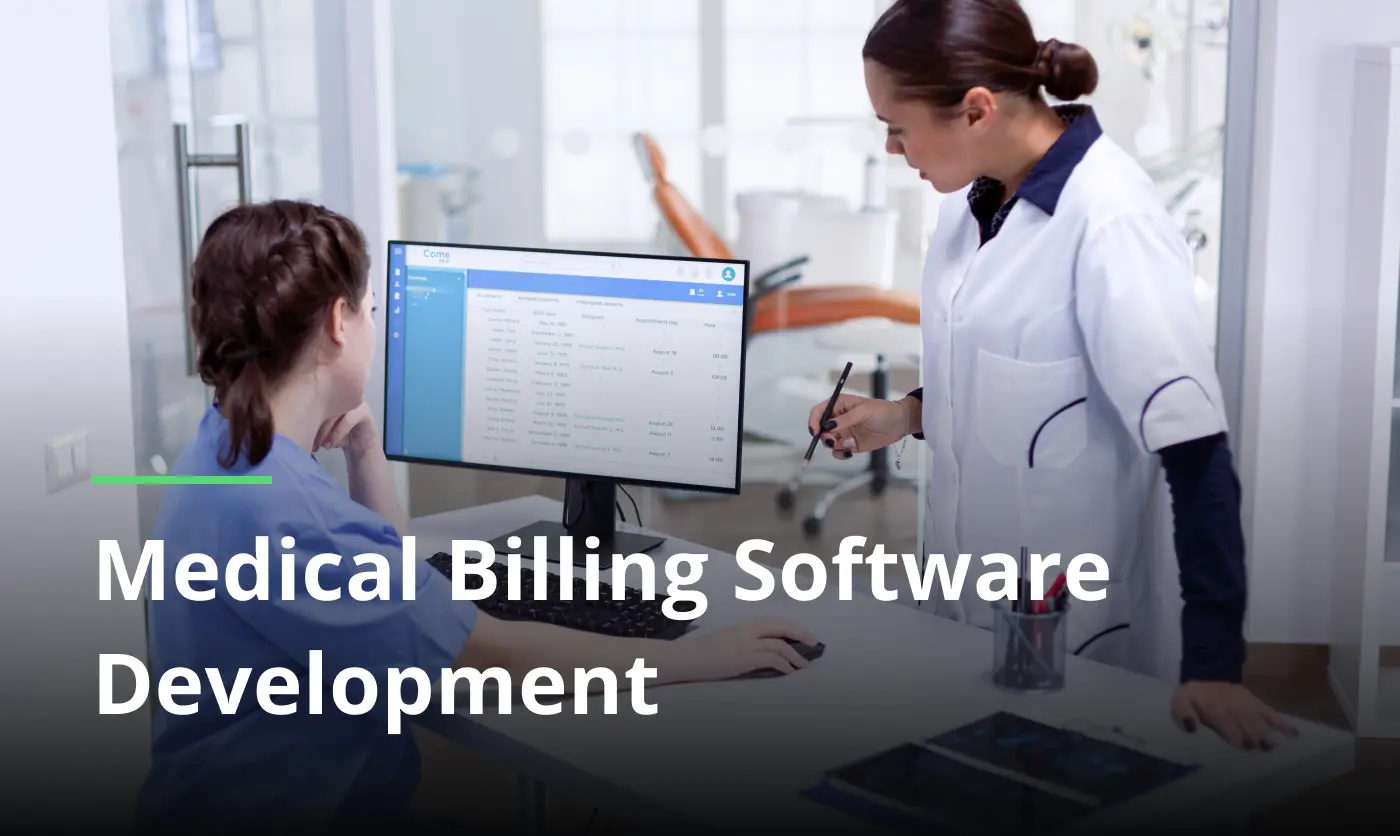
Medical billing software development feels like herding cats, requiring in-depth knowledge of coding, functions to be added, and other cold facts that can confuse new kids on the block and even tech gurus. Therefore, in this outline, you will learn how to create a reliable solution with a clean slate and fulfill all the demands for business objectives.
Whether your goal is to build a medical billing system or enhance an existing one, you will dive deeper into this topic where we leveraged our 10+ years of experience in the healthcare industry. Are you ready to learn the nitty-gritty behind custom systems for a health-related niche? Let’s get the ball rolling.
that want to expand their operations.
What is medical billing software development?
Such a creation process seems to be understandable and clear from the naming — you want to create a system or an app that will accept payments from patients with minimum efforts from their and admins’ sides, but trying to decode this term is like moving mountains with a teaspoon.
Previously, such manual work took a lot of time as treatments at healthcare organizations are not limited to one or two offers and all of that comes in spreadsheets — slow and error-prone. Here is where the medical billing software development solution comes into play, and the building of such a platform is our main topic.
The team of tech gurus, from software architects to QA testers and programmers, works together and creates a resolution to end-users’ headaches — from sensitive data management to advanced reports and payment processing.
Types of hospital billing systems
We have determined what stands for development, and for now, let’s overview what you can actually receive under the hood to streamline your operations. Here’s a quite brief overview based on our experience and operational influencing factors.

-
Hospitals-handled solutions are appreciated by many providers since it’s like finding a well-marked trail in the wilderness for an overwhelmed workforce, with the ability to manage all the information with their software. There are a plethora of pros to be named, our experts point out enhanced security as the priority.
There is also an open variant, which is suitable for large networks where you need to share information between departments and vendors, providing advantages like smooth communication and a reduced number of errors.
-
Automated platforms are one of the most efficient ways to electronically generate, track and process all the bills, with minimum human effort and errors. Here, you can make an integration with EHR across medical software development, which makes technologies feel accessible to your customers.
This type is grounded in data management and efficiency, offering real-time changes in vision, personalized billing opportunities for rehabilitants who can download, save, pay bills using their smartphone, even Apple Pay, if it’s what your target audience uses.
-
Standalone systems are used to lower costs for small clinics or private providers who don’t need EHR and other enterprise-grade software, as well as a few workers on the board. For firms that have a few managers, or where only one admin handles all the information, it’s a good way to receive a tool that is easy to set up and intuitive in usage.
According to the latest data dedicated to this market, the global size of medical billing software is widely increasing, with a prediction to reach 10.2% of CAGR by 2030, so being in the driver’s seat in this niche is profitable.
With the types we have outlined, you are capable of choosing the one that fits your demands in digital infrastructure and end-users’ needs.
How to build medical billing software in 5 steps?
You definitely want a robust, not band-aid solution with future-proof functions that bridge the gap between requirements and technologies. We lend you a helping hand, with a comprehensive creation process based on our developers’ experience.
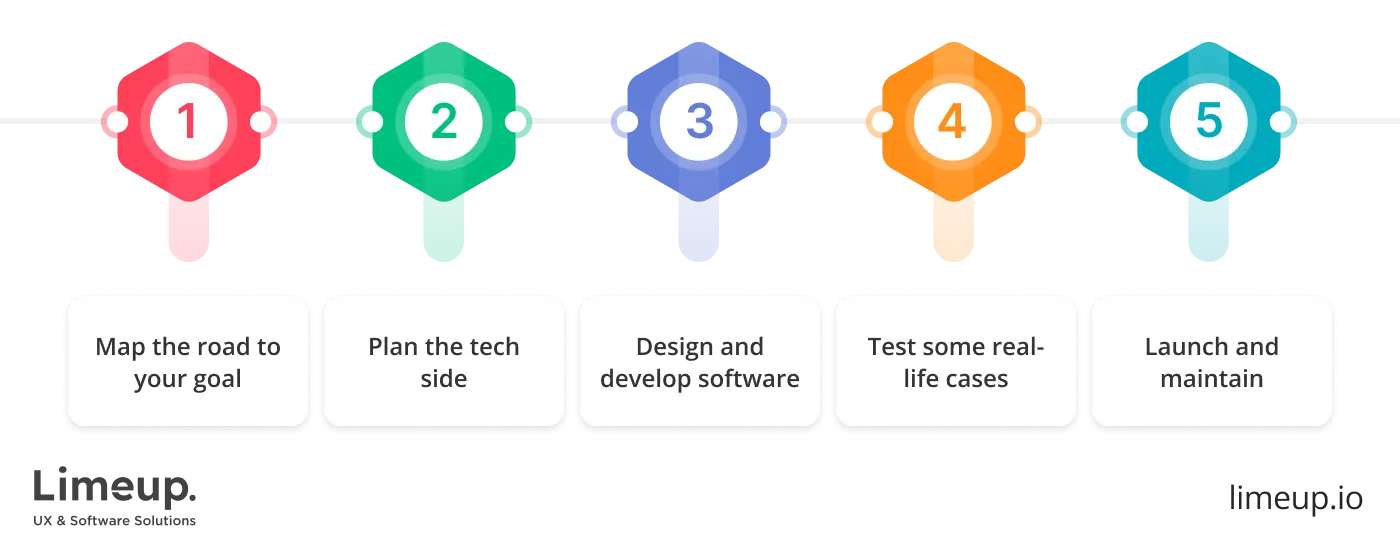
Each of them has at least 5 years of background in custom medical billing software development, so you will receive insights from coders who have burnt the midnight oil a few times for successful projects.
— Step 1. Map the road to your goal.
For now, you are ready to hit the ground running, but let us stop you here for a second and ask you to do your homework, even if it sounds rude for now. Roadmap to your desired results it’s cool, but what does your goal look like? Do you have an overall understanding of how medical billing works? Who are your stakeholders (target audience)?
We have started with vital questions, and further, it’s advisable for you to define what problems such software can solve for your doctors, patients, managers, or other workforce. Then, it’s advisable to research the market for compliance and define features (here’s a little spoiler — we will overview them).
— Step 2. Plan the tech side.
Coding is not a walk in the park, but it’s a labyrinth when you are not sure what technologies you will use, whether it will be React and Node.js or something else. Aligned with your goals, our seasoned software architects point out the necessity to decide whether you are going to cloud or on-premise, as it determines the maintenance, which is crucial after going live.
Here, you are capable of considering security practices for coding, sensitive data storage, logins and other aspects, as without access control, you are at risk of information loss.
— Step 3. Design and develop medical billing software.
Now, all the hard work you put into the two previous stages will pay off as you are 100% assured in the features to build (or core ones if you are up to an MVP), and the design to implement. It’s a time-consuming yet essential point, which is vital to be honest, as you will be coding the solution itself.
There are two options: becoming a tech-savvy profound developer, or hiring a full stack developer who has all the required background; it’s all up to you.
— Step 4. Test some real-life cases.
To say more, test every scenario that can happen, for example, if the username can’t contain numbers, ensure that users are not able to type them in the form (trust us, we know organizations who have been there). Your purpose here is to identify bugs and issues that can impact the performance and lead to financial losses.
— Step 5. Launch and maintain.
Plug-and-play apps are ready to be installed and used by your customers or workers. For now, you can dedicate time to training them with all the functions (especially if they are new kids on the block). Ongoing support can be provided by your in-house team, a vendor (if you cooperate with one who takes on medical billing software development), or a third-party IT supplier.
As it stands, you have a clear vision of all the phases required for the creation of a reliable system that will become your profitable investment, not only in monetary terms but also in terms of care and satisfaction as well. We place a spoiler to talk about functions, and here we go with an in-depth overview.
Key features to include in a medical billing system
You have just discovered the top phases of creating a solution for your needs, so it’s time to peel back the layers of this digital onion and discover functionality to be added to your system.
Definitely, they will differ according to your requirements, and we will present the core ones, based on our background in the healthcare app creation, so we will dive deeper into the rabbit’s hole and determine how you can take better care of your consumers with custom medical billing software development.
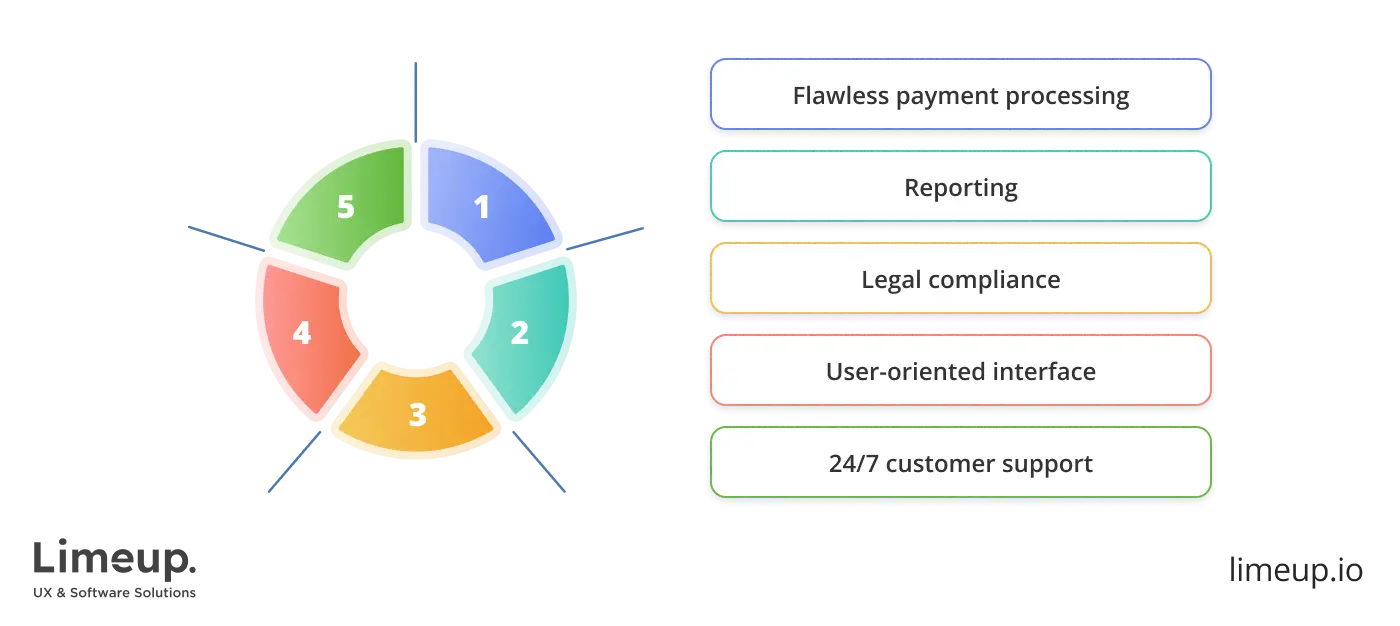
-
Flawless payment processing is your best friend as this standpoint is the vital purpose of the whole solution, which has to be automated to claim submissions and be integrated with popular gateways among your users (like Google Pay, Stripe, PayPal or else).
Therefore, your organization can receive such software which will calculate the number of services provided, their cost, discounts, referral programs or others if you have them.
-
Reporting sweats the small stuff so your workers don’t have to, when all invoices are stored and processed, and they can just click a few buttons to overview selling points and make in-depth insights.
For example, our developers said that there is a space for customization according to the company’s size and number of services, with the ability to sort out payments due to procedures, who paid, etc.
-
Legal compliance is not a nice-to-have moment but an essential one, since storing and processing a lot of sensitive and personal information is not a walk in the park, and you have to ensure the software of your choice meets rules from authorities (up to your location).
If you are wondering how it works, it’s not a new kid on the block feature, which defines who can access your files, with limits that reduce breaches. It can be accessible across data encryption, with the usage of blockchain technology as the most in-demand option when providers decide to build a hospital billing system.
-
User-oriented interface tells you to forget clunky elements and frustrating navigation as no one will use such a program if it’s not designed with their pain points in mind. To put it simply, your person needs to log in without effort, immediately (read as intuitively) understand which buttons to push, and accomplish payments in minutes.
Your goal is a delightful user experience which is also about empathy to your patients who definitely require more attention and ways to simplify the routine dedicated to their treatments.
-
24/7 customer support can be reached through a networked nebula, for example, chat-bots based on AI, which doesn’t require around-the-clock control and can blithe the bullet when it comes to emerging help with invoices.
Solely, you make more than just an FAQ, but a digital consultant with immediate reactions to keywords, which can work for small clinics who can’t handle additional staff, or help large organizations manage the workflow besides business hours.
Therefore, you are aware of unobtrusive interface requirements, embedded functionality, and other nuances that determine a preferable resolution. You are ready to start the creation process, still, if you are thinking about hiring a provider with all tech expertise under its belt, stay tuned and overview the pricing for such offers.
How much do medical billing software development services cost?
Based on everything we have considered above, it’s time to define how much on average a vendor will charge for such offers since cooperating with one is the most straightforward way for those who are not seasoned tech maestros. So, we elevate our experience as a custom healthcare software development company and present you a comparison table that includes the in-demand services for healthcare organizations:
| Type | Price | Description |
| Basic | $20,000–$39,999 | Core functions for storing data, billings, creating invoices, etc. |
| Middle | $40,000–$79,999 | All the named above and reporting, integration for EHR. |
| Advanced | $80,000–$149,999 | Real-time analytics and other leveraged functions. |
| Enterprise-grade | $150,000+ | Customized full-scale platform with features like AI-powered predictions for analytics, scalability, etc. |
A medical billing software development company sets the prices aligned with a few factors, from their location to project’s complexity, compliance needs, and more. For instance, integrations are interwoven with cost questions, as well as the level of know-how you require from developers, and the level of security.
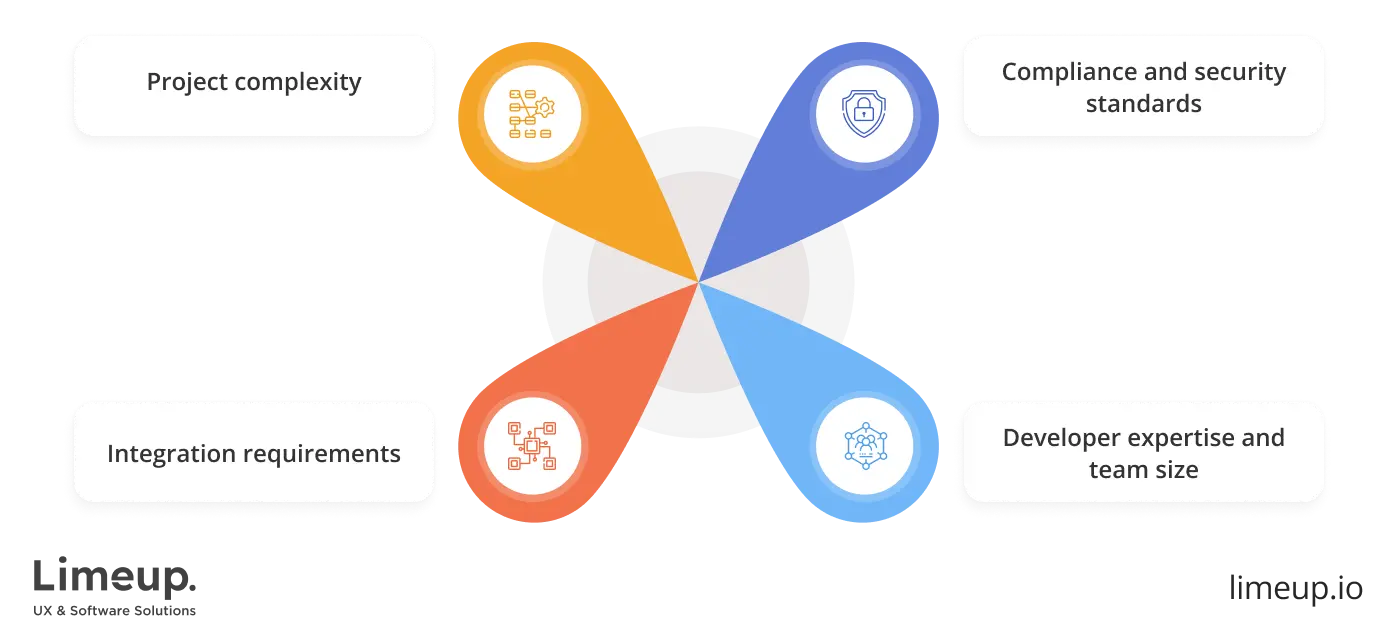
Through the creation process we have outlined above, you will define all crucial details that influence the final price, and you can manage it accordingly, for example, if you need a whole crew of coders, you are able to hire them from an outsourcing partner and the intrinsic deal is done.
and we will schedule a consultation.
On the other hand, you can become a tech guru and create it on your own if it’s a simple/basic solution or you have an in-house IT department. For firms on a budget, there are opportunities to receive an MVP (Minimum Valuable Product) or off-the-shelf platform with pre-built functions that may not cover all the aspects, but still be a cheaper and stronger option.
A reliable IT supplier will help you to align your budget with features needed, as well as it will guide you through the whole process, keeping cost capabilities in mind.
Data security in billing systems for healthcare institutions
Technologies are the VIP-pass for healthcare organizations, still, they have a hidden risk for data to be stolen, and according to the tendencies, providers have to invest more and more in protection, especially with the usage of cutting-edge blockchain, encryption as its part (primarily), and other methods.
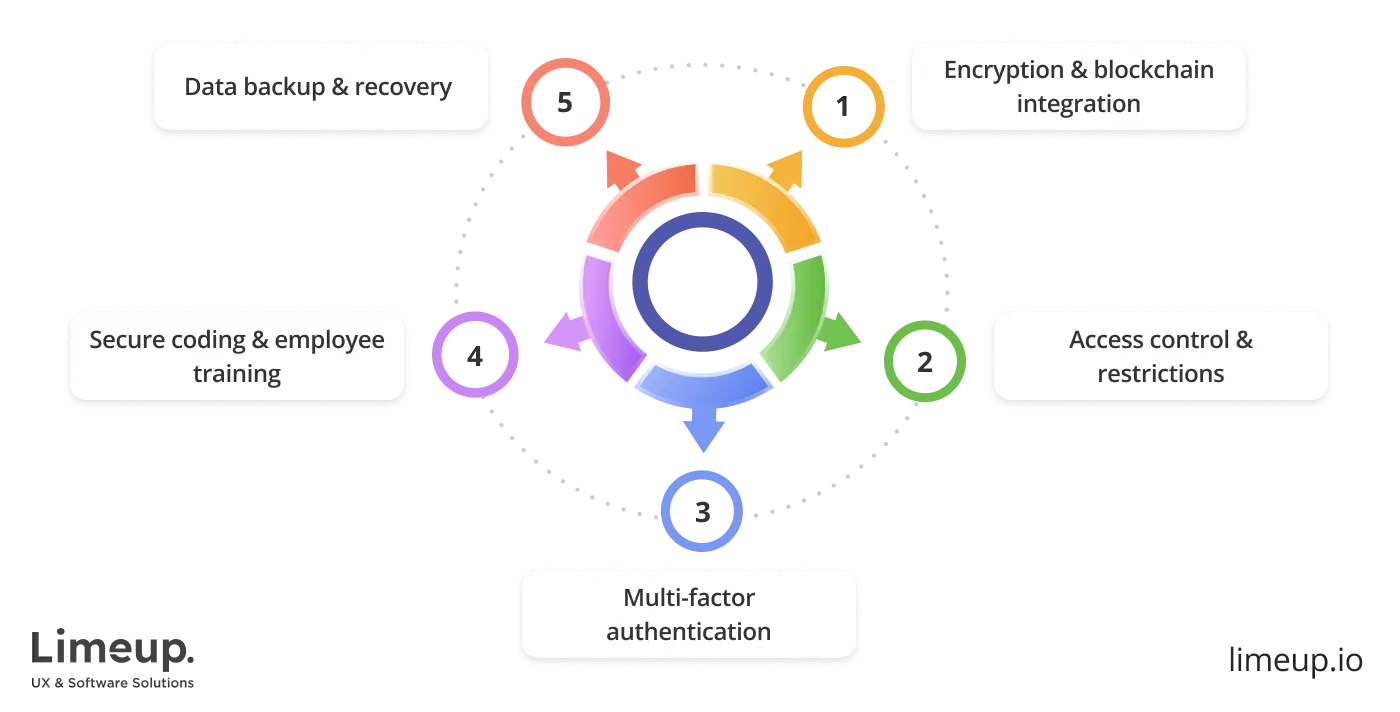
Therefore, when creating medical billing software, you definitely need to adjust to some recommendations so that cyberattacks will be just a word you read on the internet. First of all, it’s advisable to set restrictions and check who can access your data, what type, and where. On-premise solutions are less flexible but more protected, and when powered by MFA (Multi-factor authentication), become harder to break.
Another standpoint is all about coding practices where you hire a team of programmers who know exactly what and how to do in order to keep the safety high with every code line. Here, you can also refer to training your employees, teaching them factors that can compromise data safety, phishing attacks, and other nuances.
Here, we would also like to talk about how you will store the information (personal of your patients and more) since you 100% need a robust backup because no one is protected in this life, even with the modern technologies. Therefore, you will be able to easily restore what was lost, without immersive impact on the workflow.
The most efficient way to avoid such risks is to collaborate with IT suppliers who are aware of compliances, security needs for your organization’s type since they will be able to build a platform that will be almost impossible to compromise.
Why сhoose Limeup to build reliable and secure medical billing systems?
As you can see from the material above, there are a plethora of advantages driven by such solutions, which cover requirements from healthcare providers, their staff, and patients who want more convenience in daily care.
Therefore, you are able to make your payment processing faster and automate all the submissions, simultaneously reducing the number of errors that may occur with codes, information, claims and rejections. What brings the most joy — companies save more resources as manual and time-consuming paperwork is not required, and staff with free hands can dedicate more attention to urgent tasks.
You are fully equipped to get started with the building process, with the knowledge of features needed, compliances, avoiding legal issues, accessing enhanced patient care, centralizing data, and more. If you would like to delegate the tech work to a seasoned vendor, consider contacting Limeup. We will schedule a free call to discuss your needs.


